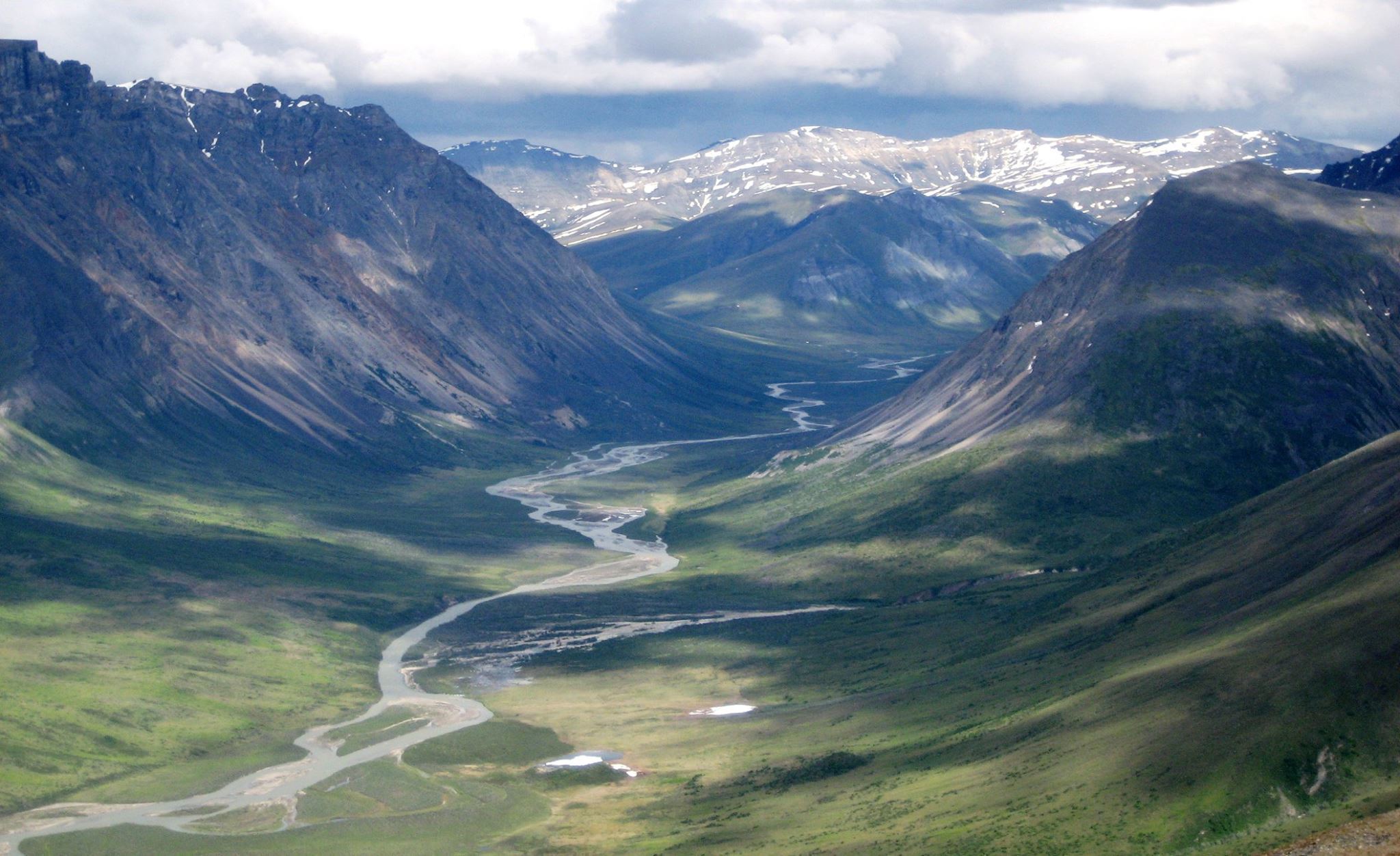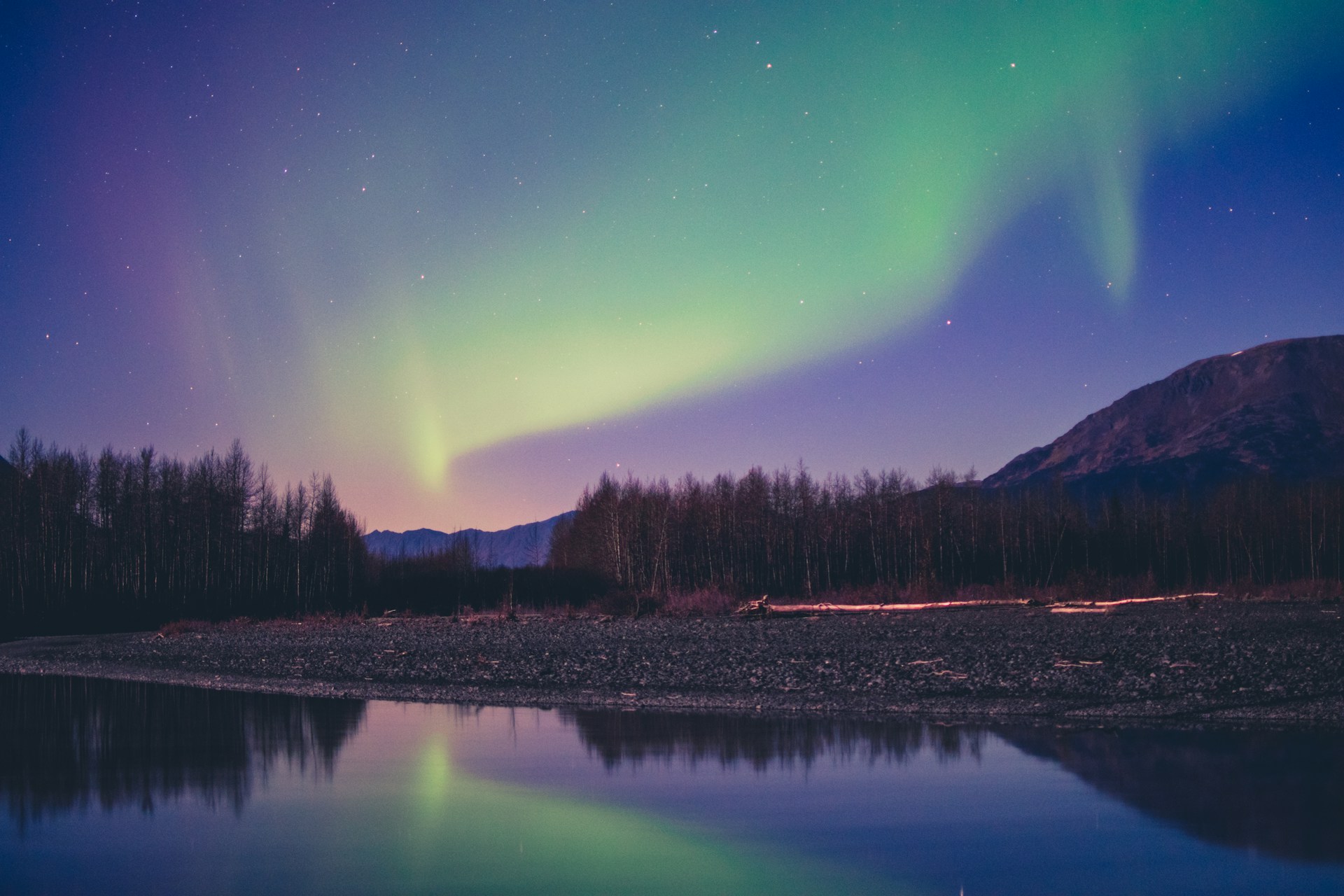Gates of the Arctic National Park and Preserve, located north of the Arctic Circle in Alaska, is a vast and virtually untouched wilderness that epitomizes the idea of remote, rugged beauty. Spanning over 8.4 million acres, it is the second largest national park in the United States. This park is a prime example of Alaska's high latitude ecosystems, characterized by its dramatic mountain ranges, such as the Brooks Range, serene arctic landscapes, wild rivers, and a mosaic of boreal forests, tundra, and spruce woodlands.
Gates of the Arctic is devoid of any roads or trails, offering an unparalleled experience of solitude and wilderness adventure to those who venture into its expanse. The park's ecosystem supports a diverse range of wildlife, including caribou, grizzly bears, wolves, and over 145 species of birds, making it a critical habitat for these species and a fascinating area for wildlife observation.
The park is also home to a rich cultural history, with evidence of human habitation dating back over 13,000 years. The indigenous peoples of this region, including the Nunamiut (inland Eskimo), have lived in harmony with this harsh environment for centuries, depending on the caribou and other natural resources for their subsistence lifestyle.
Visitors to Gates of the Arctic National Park and Preserve can engage in various activities such as backpacking, river rafting, and wildlife photography, all while experiencing the profound silence and isolation that only such a pristine wilderness can offer. Due to its remote location, access to the park is primarily by bush plane, providing an aerial introduction to its breathtaking landscapes. This park is a testament to the beauty and wildness of the Arctic, offering a unique and profound connection to the natural world.
Biome at Gates of the Arctic National Park
Gates of the Arctic National Park, located in Alaska, is a vast and remote wilderness area that supports a variety of biomes. The park's vast territory encompasses a range of elevations, from 300 to 9,000 feet (91 to 2,743 meters) above sea level, which supports a variety of biomes. Keep on reading to learn more about the biomes at Gates of the Arctic National Park
Airports Near Gates of the Arctic National Park
This is a list of the closest airports to the park, if you plan on flying into Gates of the Arctic click here to read our recommendations.
| Distance to Park | Drive Time | ||
| Allakaket Airport | 139.7 miles |
Cities Near Gates of the Arctic National Park
Here are some of the closest cities and towns near the park, take a look at our recommendations for where to stay when visiting Gates of the Arctic.

| Distance to Park |
Gates of the Arctic National Park TimeZone
The timezone at Gates of the Arctic is America/Juneau, the current time here is:
Sunrise and Sunset Times at Gates of the Arctic National Park
This table shows the sunrise and sunset times at Gates of the Arctic for the next 10 days, use it to plan your day around Gates of the Arctic stunning displays.
|
Date |
Sunrise |
Sunset |
| December 05, 2025 | 12:02 | 14:06 |
| December 06, 2025 | 12:07 | 14:02 |
| December 07, 2025 | 12:13 | 13:57 |
| December 08, 2025 | 12:18 | 13:52 |
| December 09, 2025 | 12:24 | 13:48 |
| December 10, 2025 | 12:30 | 13:43 |
| December 11, 2025 | 12:36 | 13:38 |
| December 12, 2025 | 12:42 | 13:32 |
| December 13, 2025 | 12:49 | 13:26 |
| December 14, 2025 | 12:59 | 13:17 |
Weather at Gates of the Arctic National Park
This table shows weather averages around the year at Gates of the Arctic National Park, it provides information on average rainfall, as well as maximum and minimum temperatures. Be sure to consult it when planning your trip.
|
Month |
Temperatures |
Precipitation |
Our Opinion |
|---|---|---|---|
|
Month |
Temperatures |
Precipitation |
Our Opinion |
|
Month |
Temperatures |
Precipitation |
Our Opinion |
|
Month |
Temperatures |
Precipitation |
Our Opinion |
|
Month |
Temperatures |
Precipitation |
Our Opinion |
|
Month |
Temperatures |
Precipitation |
Our Opinion |
|
Month |
Temperatures |
Precipitation |
Our Opinion |
|
Month |
Temperatures |
Precipitation |
Our Opinion |
|
Month |
Temperatures |
Precipitation |
Our Opinion |
|
Month |
Temperatures |
Precipitation |
Our Opinion |
|
Month |
Temperatures |
Precipitation |
Our Opinion |
| January | -28.3 °C / -21.3 °C | 4.5mm | Bad Weather |
| February | -28.5 °C / -21.1 °C | 5.2mm | Bad Weather |
| April | -17.7 °C / -7.2 °C | 4.6mm | Bad Weather |
| May | -3.7 °C / 5.9 °C | 21.5mm | Bad Weather |
| June | 4.9 °C / 14.2 °C | 35.4mm | Good Weather |
| July | 8.3 °C / 16.4 °C | 68.3mm | Good Weather |
| August | 4.4 °C / 11.8 °C | 68.7mm | Good Weather |
| September | -2.5 °C / 5.2 °C | 38.5mm | Bad Weather |
| October | -11.7 °C / -5.5 °C | 22.6mm | Bad Weather |
| November | -21.8 °C / -15.1 °C | 12.1mm | Bad Weather |
| December | -24.8 °C / -17.5 °C | 28.7mm | Bad Weather |
